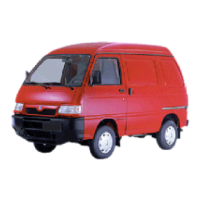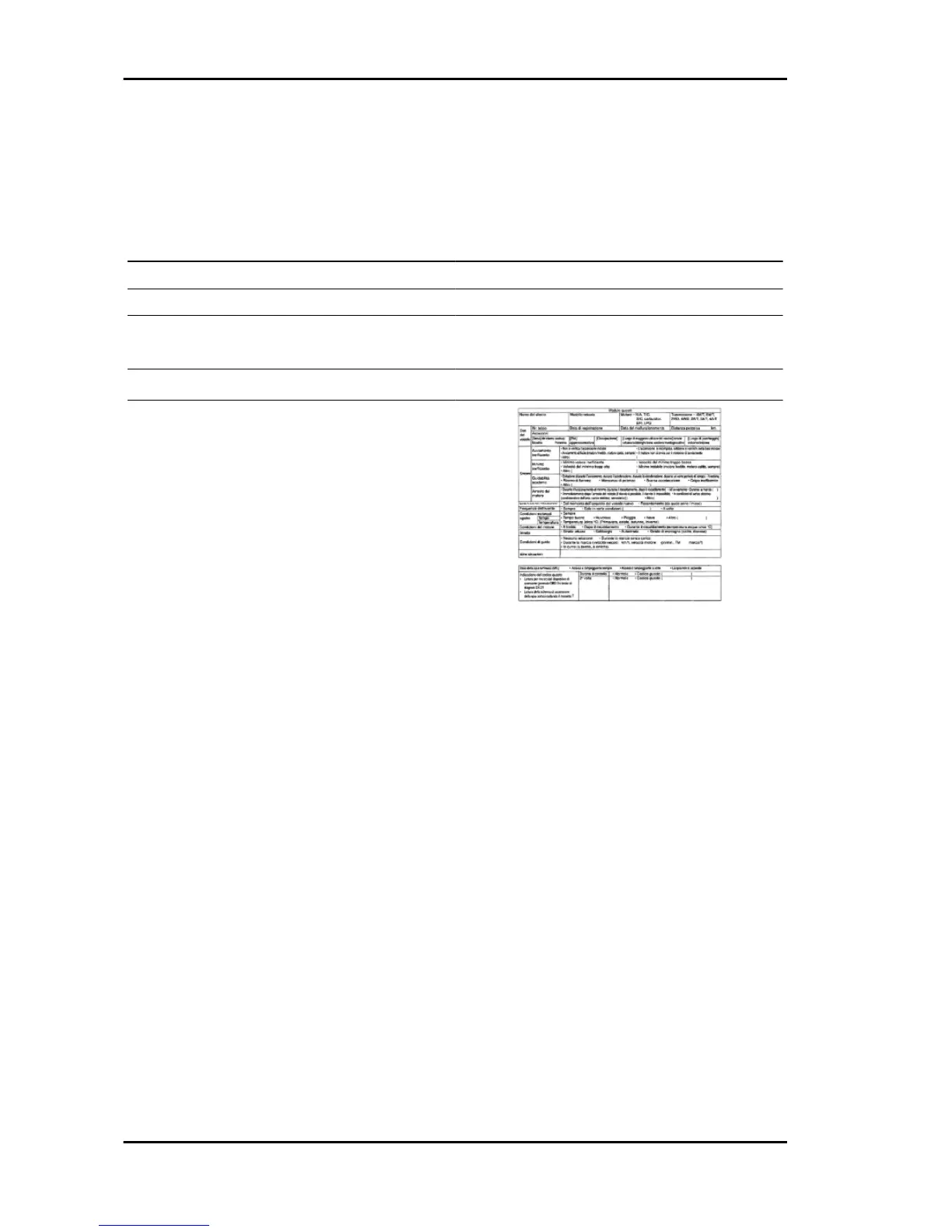have nothing to do with the current defect, could instead turn out useful to repair the defect. It is therefore
important to manage to obtain as much information as possible and bear it in mind as a reference during
the identification of the malfunction phenomenon.
Main points to analyse the defect the customer has complained about
What? Vehicle model, system rules
When? Date, time, event frequency
Where? Road surface conditions
Under which conditions? Running conditions, riding conditions, atmospheric con-
ditions
What happened? How could the customer identify the operation defect?
Question form
If the question form is prepared beforehand, as
shown below, it is possible to pose all the neces-
sary questions. A standard form which can be
modified according to the single characteristics of
the market is shown below.
Question form
Checking, storing and clearing the failure code/frozen image data
Once the failure code is indicated, confirm if that particular defect has been previously detected or if it
is still being detected currently, and confirm how the defect is related to the failure reproduced. To
confirm this, indicate the failure code / frozen image data twice, that is to say, indicate the failure code /
frozen image data, clear the data, and confirm the malfunction phenomenon. Then, indicate the failure
code / frozen image data once more.
It is recommended to check the failure code (including the failure codes which are not identified) referring
to the section "failure code checking procedure". Print or take note of the code and frozen image data
when they are identified. Then, clear them referring to the "failure code clearing" procedure. If the failure
code is not cleared, an incorrect diagnosis could be carried out, reaching the conclusion that the regular
circuit is not working properly, or difficulties could arise during troubleshooting.
Malfunction phenomenon reproduction confirmation
While identifying failures, the operator can not detect the cause of the malfunction unless the phenom-
enon is confirmed. In this regard, it is essential to reproduce the failure phenomenon recreating the
same conditions and environment where the failure was detected, according to the information obtained
from the customer.
In case of phenomena which can not be easily reproduced, recreate the same running conditions oc-
curring when the failure was detected (road surface conditions, atmospheric conditions, riding condi-
tions). To that end, it is very important to try to reproduce the failure constantly, with the aid of external
Iniection System PORTER 1.3 16V
IS - 406

